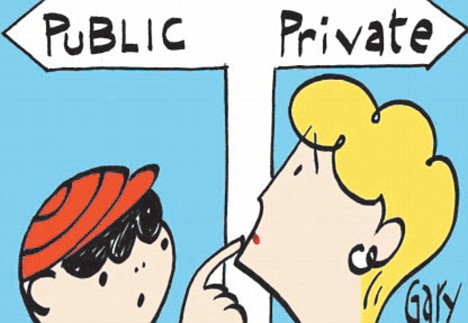With technology at their fingertips,
children today are often exposed to a barrage of sexualized images and
messages. But is it all too much too soon, asks Sarah Marinos.

Raunchy music videos, advertising that
pushes sexual boundaries and internet sites containing sexual images and
messages…
Some child health experts believe that
today’s children are too soon and too often exposed to sexual messages that
they are emotionally and psychologically unprepared for. Without key adults in
their life to serve as a reference point for these messages and images,
children may become confused and anxious about how to interpret them. In some
cases, researchers believe it is leading to increasing numbers of Australian
children engaging in problem sexual behavior.
“We are seeing kids as young as seven or
eight exposing themselves to other kids,” says Dr Joe Tucci, CEO of The
Australia Childhood Foundation. “There has to be a link between this sexual
behavior and the saturation in the community of sexual themes. Kids are trying
to work out what they see and what it means. It makes children unsettled and
they are trying to overcome that unsettled feeling.”
Play catch-up
“Society has become increasingly full of
sexualized imagery. This has created a wallpaper to children’s lives. Parents
feel there is no escape and no clear space where children can be children,”
says Reg Bailey, author of a 2011 independent UK review on the subject.
Maggie Hamilton, author of “What’s
Happening to Our Girls?” (Penguin, $26.95), believes that while children in Australia are certainly exposed to this sexual wallpaper, there is no “evil plot”. It’s
more that society and technology have shifted and parents are trying to get up
to speed with the changes.
“Parents need to get back to their sense of
place in a child’s life,” she says. “It’s not the pop culture, the friends and
the marketing campaigns that are important to children. It is belonging, love
and feeling supported and protected. Kids might be seemingly confident but it’s
a shield to protect them from a world they hind hard to cope with.
“Parents can help children be empowered and
smart and feel good about themselves and where they are heading. We need to use
our own experiences and keep connecting with them so they can find the role
they want to take in life.”
Messages and mediums
On average, Australian children watch
around two hours and 30 minutes of TV per day. This means they see about 30
advertisements each hour. Despite regulations governing advertising and program
content, Tucci says advertisers and program makers are sophisticated in
including subtle sexual messaging.
In a 2008 submission to a government
inquiry on child sexualisation, Tucci listed further examples, including the
launch of padded bras for girls as young as six, dolls dressed in lingerie and
leather for young girls, and an adolescent T-shirt range bearing slogans such
as “Mr Well-Hung” and “Miss Floozy”. He says this “normalizes” sexual themes to
children.
“The regulations are pretty weak and people
find loopholes. There have to be a lot of complaints before regulations take
action and many people don’t even know who they should complain to,” he says.
Public to private
The biggest concern today, however, is the
all-pervasive internet, with parental filters incapable of blocking out all
unsavory imagery for children.

“Before, we only really had public
communication, but technology has made things more private so it’s hard for
parents to keep up with what their kids are seeing,” says Tucci.
“The material that can be sent privately
now can be more sexually graphic and how do you explain some of this to a
child? And these mediums are normalizing this kind of content, so when you do
show this stuff on the internet you don’t get the same public outrage. It
desensitizes the community.”
Technology increases the potential for
inexperienced children to attract unwanted attention from sexual predators,
too. NetAlert, Australia’s internet safety advisory body, found almost 50 per
cent of children had been approached by a stranger on the internet.
“Every time a child goes online they run
the risk of viewing material that is unsuitable, frightening, distasteful or
illegal,” says Dr Michael Carr-Gregg, an adolescent psychologist and author of
“Real Wired Child: What parents need to know about kids” (Penguin, $19.95)